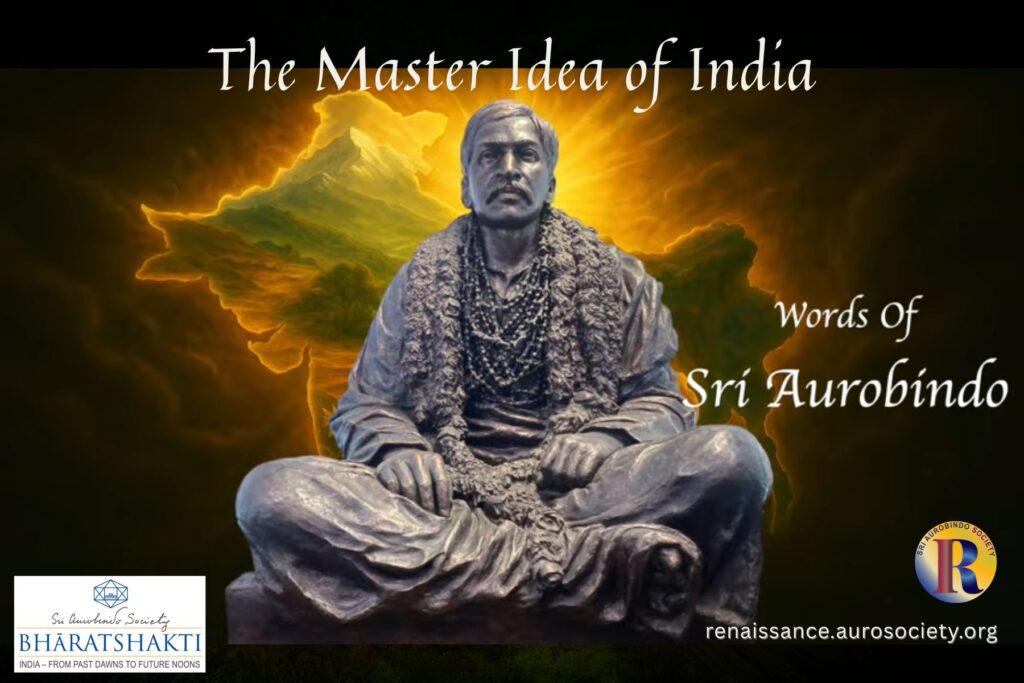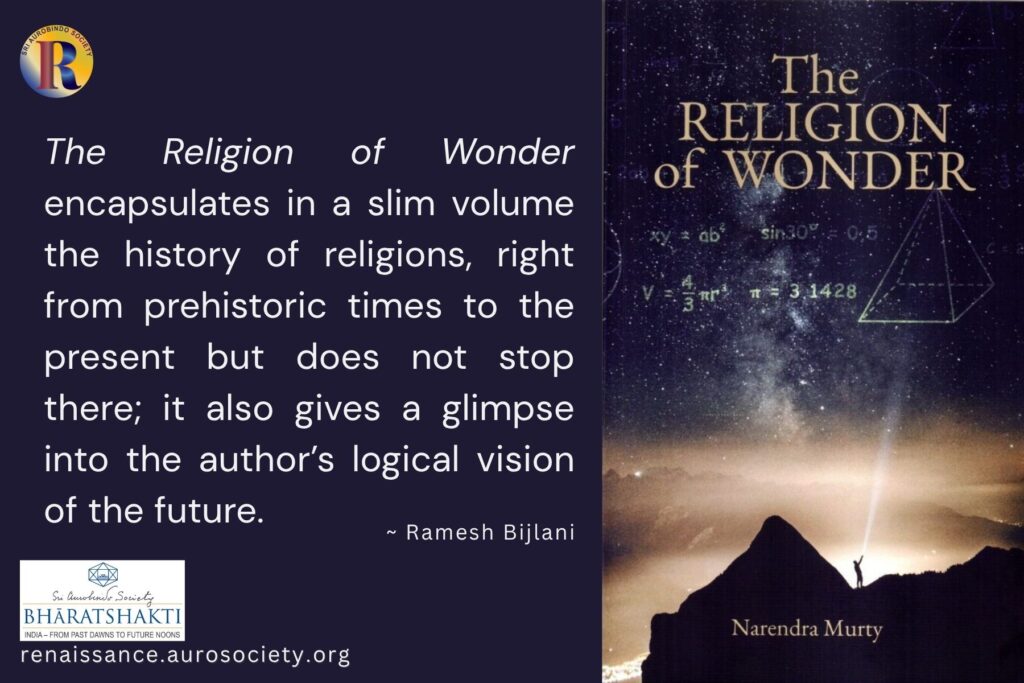Volume 1, Issue 3
Author: Rajat Mitra, with Introduction by Beloo Mehra
Editor’s Note: This month we bring our readers’ attention to a new book that will make them discover those pages from Indian history which are almost always ignored in the standard school history textbooks.
Introduction by Beloo Mehra
“…if you will not learn from history, you will have to be taught by a harsher teacher the same lesson—and taught perhaps at a much more tremendous price…” (Sri Aurobindo, CWSA, Vol. 7, p. 770)
History tells us that this has been true of all nations, all peoples, all individuals. History can be a great teacher; our history teachers often said so. But what if the history that has been taught to us in our schools and colleges is incomplete, one-sided, or worse, completely biased? What if we are not encouraged to question the text-book histories we have been taught for generations? Will we ever have a truer, clearer, wider, picture of our history – as a people, as a nation? This is a key question facing our times as we walk further in this seventh decade of our independence.
“Saffron Swords: Centuries of Indic Resistance to Invaders,” (2019), a book written by Manoshi Sinha Rawal tells the stories of 52 hero-warriors from the east to west, north to south, during the last 1300 years, who put up a brave resistance against invaders, first against Islamic invasion and rule, and later the British, who fought until their last breath defending the motherland.
Why “Saffron Swords” on Renaissance?
“India has not only had the long roll of her great saints, sages, thinkers, religious founders, poets, creators, scientists, scholars, legists; she has had her great rulers, administrators, soldiers, conquerors, heroes, men with the strong active will, the mind that plans and the seeing force that builds.” (Sri Aurobindo, CWSA Vol. 20, p. 246)
Speaking about the book – the first in its series – the author Manoshi Sinha Rawal says that “Saffron Swords” is her contribution to shift the usual narrative Indian school-going children and college-going youth are given – that of India historically being a land run over by a series of invaders one after another. Where are the stories of the resistance of Indian warriors, the heroes who gave everything to defend their motherland? Why are these stories never told or not emphasised as they should be? This book is the author’s tribute to the unsung warriors of India, both men and women, from the last 1300 years.
Sri Aurobindo once wrote, “…nations had been made free not by a scrupulous pursuit of unanimity or of unity in action but by faith, energy and courage in a number of its more energetic sons carrying away the bulk of the nation into a strenuous effort to reach a great ideal.” (CWSA, Vol. 7, p. 769). Modern notions of ‘objective’ historiography often ignore the role of the individual, one of the most powerful subjective forces in shaping the course of a people’s history. An individual hero inspires, awakens, leads and even after he or she is gone, the stories of his or her valour and courage continue to motivate and fill the hearts of the people with strength, with the force of the idealism. This is why stories of our heroes must be told again and again. It is these stories which awaken and shape the minds of the younger generations, which connect them with their glorious past and inspire them to walk courageously toward a better future.
In Bhavani Bharati, his only poem in Sanskrit, written between 1904 and 1908, Sri Aurobindo paints the picture of such an awakening, this time, by the call of the Mother, the Bhavani Bharati. A poem of 99 verses, composed in 11-syllabled metres which are an apt choice for emoting heroism, power, anger, war, Bhavani Bharati was confiscated by the Calcutta Police and was rediscovered in 1985. (Auropublications)
Using the creative device of an Indian heart hearing and awakening to the cry and the call of the Shakti, the Mother of the Nation, the poem inspires us to fight for our motherland, to bring back her full glory, to sacrifice all that must be sacrificed in order to bring about the victory of the Truth over Un-truth, of Dharma over Ignorance, of Good over Evil.
The Mother of the Nation asks tremendous sacrifice. It is not a call for the faint-hearted. Warriors, she needs, to defend her honour, to seat her on her glorious throne.


“Saffron Swords” tells us the stories of 52 such warriors, such children of Bharata who heard the call of Bhavani Bharati and gave all they had including their lives, for the glory of their motherland.
As we learn about, honour and revere these great sons and daughters of Mother India, let us also remember that like everything else in the existence, these warriors were also moved by that One Shakti, that One Force of the Divine which moves everything, which moves in us all, from highest creature to the lowliest one. As Sri Aurobindo reminds us in his other magnificent poem expressing the veer-rasa, Baji Prabhou:

For anyone who asks, why should we care about the stories of these hero-warriors today, what does it mean for the work of building a new India today, Sri Aurobindo gives the answer in plain words:
“If we look at Japan, we see that the Japanese people never forget their ancestors who offered their lives as a sacrifice for the sake of their country. This sense of sacrifice is always present in the Japanese blood. When a warrior fights for his country, he recalls those sacrifices. This is something we must learn from Japan. We must learn from the Japanese how to honour our ancestors and evoke the spirit of Nationalism by remembering them. Whatever you do today, you are doing not for your own sake but to pay the debt you owe to them. This you must never forget. Not only your ancestors—the generations to come are also an organic component of your nation. When we envision an Indian nation, it should be along these lines.… What we need is a wide, engaging vision of our nation and of nationalism; our action must match that vision and as a result our nation will produce great philosophers, statesmen, warriors and commanders.” (CWSA, Vol. 7, p. 813).
Nation-building is not a task for the weak-hearted or for the manipulative or for those driven by individual ambition or selfish pursuits. “Indians must develop the virtues of the Kshatriya,” said Sri Aurobindo (CWSA, Vol. 6, p. 251). And what are the virtues of a true Kshatriya? First and foremost, it is to not bow down to “an unjust yoke but to protect his weak and suffering countrymen against the oppressor and welcome death in a just and righteous battle” (ibid). India of today is slowly becoming conscious of the truth that “the brain is impotent without the right arm of strength.” (ibid).
Books such as “Saffron Swords” are significant in this awakening, as they remind us of our heroes and heroines who embodied the spirit of Kshatriya-hood, who resisted the onslaught of an oppressive and unjust rule, who fought and gave their all to defend the honour of their motherland.
A final thought: It is absolutely essential that our children and youth are introduced to these stories of valour. What would make a book like “Saffron Swords” even more appealing to young minds and hearts is if these stories are accompanied with appropriate illustrations. We at SAFIC are willing to collaborate with the author and publisher of “Saffron Swords” to work on an illustrated version of this important book.
Book Review by Rajat Mitra
We are honoured to present for our readers a thought-provoking review of “Saffron Swords,” written by Rajat Mitra.

Title: Saffron Swords: Centuries of Indic Resistance to Invaders
Author: Manoshi Sinha Rawal
Published by: Garuda Prakashan, Gurugram
Year of Publication: 2019
ASIN: B07Q139493
One of the defining characteristics of history writing by historians of India is that they make it bereft of ideas. As a social scientist would tell, this is one of the classic ways in which historians can hide, distort a part of history as it really happened, and present their own version for future generations; the argument being that if history textbooks generate ideas and are taken seriously by readers, they will make the study of history ‘contingent’. Events of the past will then be seen as that could have gone either way, making the reader go deeper and search for more ideas.
One of consequences of that will be to explain why right people armed with the right ideas didn’t always win. This process generates empathy for those who fought and struggled valiantly and be an inspiration.
Manoshi Sinha’s book Saffron Swords does exactly that. It tells us the story of those Indians who fought valiantly against invaders and armies, based on an immense moral courage. To me, this book will do what our textbooks haven’t been able to do for the children of India and many adults like me. It will generate ideas for us to look deeper in the history we haven’t been exposed to as part of our education.
Manoshi’s book is a beginning of a change. It goes against most of the textbooks written on history in the last seventy years, especially our textbooks where the courage of Hindus is not mentioned as it was felt to be not worth writing about for our school children.
Our textbooks are not sympathetic to the heroes who showed courage and bravery. They find mention in Manoshi’s book. Their names, their lives, their inner selves on why they fought which was lost to the pages of history finds a home. Our children who did not get ideas about what it meant to have courage now find so in these pages.
Ideological ambivalence and contradictions are important for studying history, especially for people who have lived under slavery and whose history was distorted by their masters. This is true for Blacks, for Jews and for Native Americans, and I will add, for Hindus. They have no one to write a history for them that would tell what they went through. They need a history that will provoke them into looking at their own minus the prism of western historians.
Ideas have power and those generated from reading history have a power to change the destiny of a people. The ideas that motivated the heroes are documented in the pages of Saffron Swords. The example they set lives on long in people’s minds and has been captured beautifully. It gives us the idea that our ancestors resisted, rebelled and did not accept the foreign rule and its atrocities lying down. This is an idea that has been denied to our children.
What was our nation conceived in? It was conceived in dharma. Yet, today the entire thought process of the people, of our constitution, our history textbooks all take us away from this concept imposing many an alien concepts in the name of secularism that have no place in our Indian ethos.
While growing up, reading our textbooks I got the feeling that our invaders and their dynasties and our local heroes were virtually identical people. Textbooks for our students are silent about the fact that Akbar slaughtered thirty thousand people in Chittorgarh, mostly women and children, Babur built the Babri masjid by destroying the Ram temple and Aurungzeb destroyed the holiest spots of Hinduism. Our history textbooks are silent about Jaziya (tax) that Hindus had to pay in order to survive.
Reading our books, one gets the feeling that our state historians have tried to minimize the evil the invaders were and suppress the glory of the heroes who opposed them. Our heroes’ passion to defend the motherland and the two entirely different values represented by the warring sides is missing from our books. As a result, they become ‘virtually identical people’ and difficulty arises as to choose who was morally right of the two.
Akbar and Maharana Pratap both seem to be equally identical, equally idealistic; one the justice loving emperor of India trying to unite everyone, the other opposing him, a rebel king trying to retrieve his kingdom. The choice is easy to make then.
All wars, all conflicts in the history of India have been presented to us in a way that is crafted in a language designed for deceit. Is that why we don’t see any passion in our children that can come from reading our history?
The history of India, the valiant resistance by its children to invaders and conquerors could have been presented as one of the greatest gifts to the world, for people fighting against oppression and injustice. It couldn’t be. Its relevance was lost to the history writing in the last seventy years that in my opinion made us descend into further shame and humiliation.
The book Saffron Swords by Manoshi Sinha tries to undo that injustice.
About the Reviewer
Dr. Rajat Mitra is a Clinical Psychologist, Author, Harvard alumni, and UN public service awardee for gender justice. He has worked nationally and internationally on human rights issues, worked with Islamic militants and radicalized youth on one hand and survivors of mass violence and genocide on the other. He is the author of “The Infidel Next Door” (2019), a book that he believes will speak directly to all people whose conscience has ever been shaken by religious persecution in our times.
Cover image and Baji Prabhou image: Both illustrations are taken from Baji Prabhou by Sri Aurobindo, published by Auropublications
Book image: Promotional image of the book, available from the publisher’s website.



